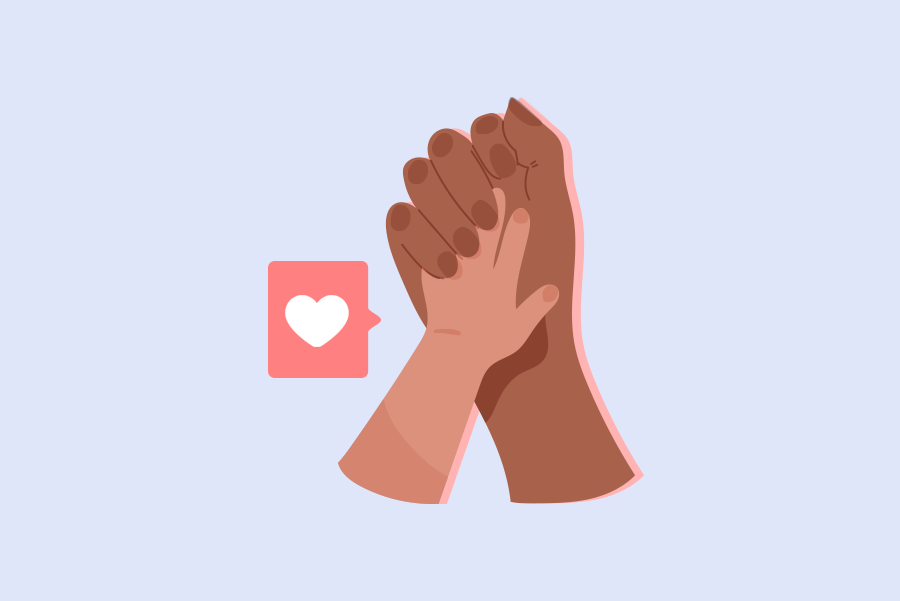
Deaf culture: what is it, history, aspects, examples & facts

First things first: there is a big difference between the medical and cultural definition of deafness. From the medical point of view, it is a disability caused by hearing loss, which can happen at any moment in life. Now, from the cultural perspective, it is a different way to experience life not based on sounds. Usually, these two concepts are differentiated between people who are deaf (medically) and Deaf (culturally).
Today, 13% of the United States’ population are deaf or hearing impaired. However, not all of them identify with the deaf culture. Do you want to know why? Then follow along this article!
What is deaf culture?
As a linguistic minority, deaf people share many similar life experiences, which manifests into the deaf culture. According to the World Federation of the Deaf, it includes “beliefs, attitudes, history, norms, values, literary traditions and art shared by those who are Deaf”. Also, probably the main aspect of deaf culture is the use of Sign Language as the main form of communication.
Deaf culture has many of its roots in the educational background of the community, because that is where Sign Languages usually originated and are more broadly assimilated. On top of that, many individuals are introduced to the deaf culture when joining schools for the Deaf, since most of them are born into hearing families.
Another important aspect of deaf culture is the idea of deaf gain. It goes against the medical term ‘hearing loss’, focusing on all the positive experiences acquired with deafness instead of the sense of hearing that isn’t present.
In summary, deafness is not something that needs to be fixed, it is just a different way to experience life, rooted in a visual world.
History of deaf culture
The term ‘deaf culture’ was first introduced by Carl G. Croneberg to discuss the similarities between deaf and hearing cultures, in the 1965 Dictionary of American Sign Language.
However, the key event in history that strengthened deaf culture was the 1988 Deaf President Now movement at Gallaudet University. A huge protest erupted at the time when a hearing person was chosen to be the 7th president of the institution, while running against two other deaf professionals. After days of protesting and students having taken over the campus, the hearing candidate resigned and Dr. I. King Jordan, a deaf professor, was appointed the new president.
The movement received international media attention and is now known as the deaf community’s seminal civil rights accomplishment. It is important to highlight that Gallaudet is an important icon for deaf culture, being the only liberal arts college for deaf students in the world.
What is unique about deaf culture?
Every culture is unique on its own and has its characteristic traits. For deaf culture it is not different.
As we have said before, Sign Language is deeply valued, alongside a reliance on eyesight, that supports a visual lifestyle. Also, people from the deaf community develop deep connections with each other, creating a very powerful nationwide network. Another important aspect is the use of technology to overcome communication barriers, which we will talk more about later on.
As any other culture, it also has strong cultural traditions in its organizations, such as deaf clubs, schools and religious institutions. It also developed its specific norms and behaviors, like a communication etiquette, which we will explore further along.
What are the five aspects of deaf culture?
There are some key aspects that represent deaf culture, let’s dive deeper into them:
- Language: the use of Sign Language, which we have said before, and will continue to say it. It is important to know that Sign Languages have their own structural and grammatical composition and rules. They are not just a signed translated version of the country’s oral language.
- Values: it is essential to preserve Sign Language literature, heritage and other forms of arts and legacies. Alongside that, clear communication is very much valued as well.
- Traditions: stories from other deaf generations, shared experiences and participating in important events for the community.
- Norms: communication etiquette is a must. You have to know about the importance of eye contact, how to communicate and get people’s attention properly. For example, when trying to call for someone, instead of shouting their name, try tapping on their shoulder or delicately turning the lights on and off.
- Identity: accepting and recognizing one self as part of this community, participating and being proud of its culture and heritage.
Do all deaf people identify with the deaf culture?
No. Identifying with deaf culture is very much linked to being a part of the deaf community, which we will explain better in a moment. It relates to how someone identifies themselves in terms of hearing loss and communicating in Sign Language. However, everyone is their own person, so it depends on their personal experiences and personalities.
Also, deaf people have different trajectories, and some are only introduced to deaf culture at a later point in their lives. Some are exposed to it from early childhood and family environments, others are acquainted with it in schools for the deaf, and some can even be introduced to it in college or even later.
This happens because deaf individuals usually don’t acquire their cultural identities from their hearing parents, making them even feel more identified with peers from the deaf community rather than their own families, due to communication barriers.
What are examples of deaf culture?
Deaf culture can vary depending on the community’s country of origin or intersection with other cultures. However, some aspects tend to stay the same everywhere. These can become great examples of deaf culture, such as collectivism, use of Sign Language and a direct and blunt way to communicate.
What does CODA mean in the deaf culture?
This acronym stands for the Child of Deaf Adults. It represents all hearing people with a deaf mother or father, or even both! CODAs are usually part of the deaf community. Even though they are hearing people, they embody deaf culture and are huge activists for the deaf cause.
Do all deaf people have deaf parents?
No! Actually, it is estimated that only 10% of deaf people are born into deaf families. The remaining 90% come from hearing families, who usually have a harder time trying to adapt to the hearing culture and are only introduced to deaf culture later in life.
What is the deaf community?
There are different deaf communities around the world, but all of them are composed by a group of people that share the same Sign Language, heritage and value of the deaf culture.
Being part of this community is a personal choice, usually correlated with someone’s own sense of identity as deaf person, not depending solely on their hearing level. There are also some hearing people that belong to it, such as CODAs and Sign Language interpreters. Although they participate in it, they will never be at the core of the deaf community.
The deaf community supports and promotes social interaction for deaf individuals, who normally feel frustrated and left out of the hearing world. Therefore, culturally identifying as deaf and being involved in the community can contribute to better self-esteem for them.
What are examples of the deaf community?
Deaf culture is not homogenous and set in stone. There are different deaf communities around the world that have different cultural norms. For example, they speak different Sign Languages.
Belonging to the deaf culture intersects with other cultural backgrounds, such as nationality, race, ethnicity, gender, sexual orientation, class, education and other identity markers. This results in a tremendously diverse community, with different institutional landmarks. Let’s learn more about some of them:
Deaf African-American institutions
Established in 1982, the National Black Deaf Advocates is a cultural institution focused on ensuring the health and welfare of black deaf people. They work towards promoting social equality, leadership development, economic and educational opportunities for members of the community.
On top of that, deaf black people have also developed their own Sign Language, know as Black ASL.
Deaf LGBTQIAP+ institutions
There are two main organizations that support deaf members of the LGBTQIAP+ community in America nowadays: the Rainbow Alliance of the Deaf (RAD) and the Deaf Queer Resource Center (DQRC). They are both nonprofit institutions, from 1977 and 1995 respectively, that aim to promote educational, economical and social welfare for this intersectional community. They organize support groups and workshops to increase visibility and protect their history.
Deaf religious institutions
There are various religious institutions for the deaf from multiple religions, such as churches and synagogues. In all of them, the main form of communication is Sign Language. As well as other deaf organizations, they promote inclusion, being an accessible and safe place for practicing your faith.
Deaf women’s institutions
There are many organizations throughout the United States that focus on supporting deaf women. The main one is Deaf Women United, which has 15 chapters spread throughout the country. Their mission is to empower these women, promoting networking and enrichment.
Also, there are some institutions specialized in breast cancer support for deaf and hearing impaired women, such as the Pink Wings of Hope.
What is the importance of technology for the deaf culture?
Assistive technology can allow people that are a part of the deaf community to have more autonomy and independence in life. It is not about “fixing” their disability and lack of hearing, but about giving them the necessary tools to participate in society with a better standard of equality.
The main types of assistive technology used by deaf people are cochlear implants, Sign Language translators, closed captions, subtitles and video relay services. Also, technology that helps people in their daily lives must also be adapted for those with hearing disabilities. For example, alarm clocks can provide visual stimulation instead of relying solely on sound and light flashes connected to doorbells.
With that being said, there are still some people who oppose the use of technology, especially cochlear implants, within the deaf culture. They claim that it threatens the deaf culture, while dictating that the hearing world is better.
Conclusion
There is still a lot of discrimination towards deaf people and their culture, caused mainly by lack of knowledge, harmful stereotypes and negative attitudes regarding deafness.
We should not need to absorb and obligate deaf people to fall in line with the hearing culture, imposing on them what is easiest for society as it is. What we do need to do is to have societal reforms, with the help of public and private organizations, so deaf people feel more integrated. Anyone can do this, and you can start by learning Sign Languages with the Hand Talk App!


